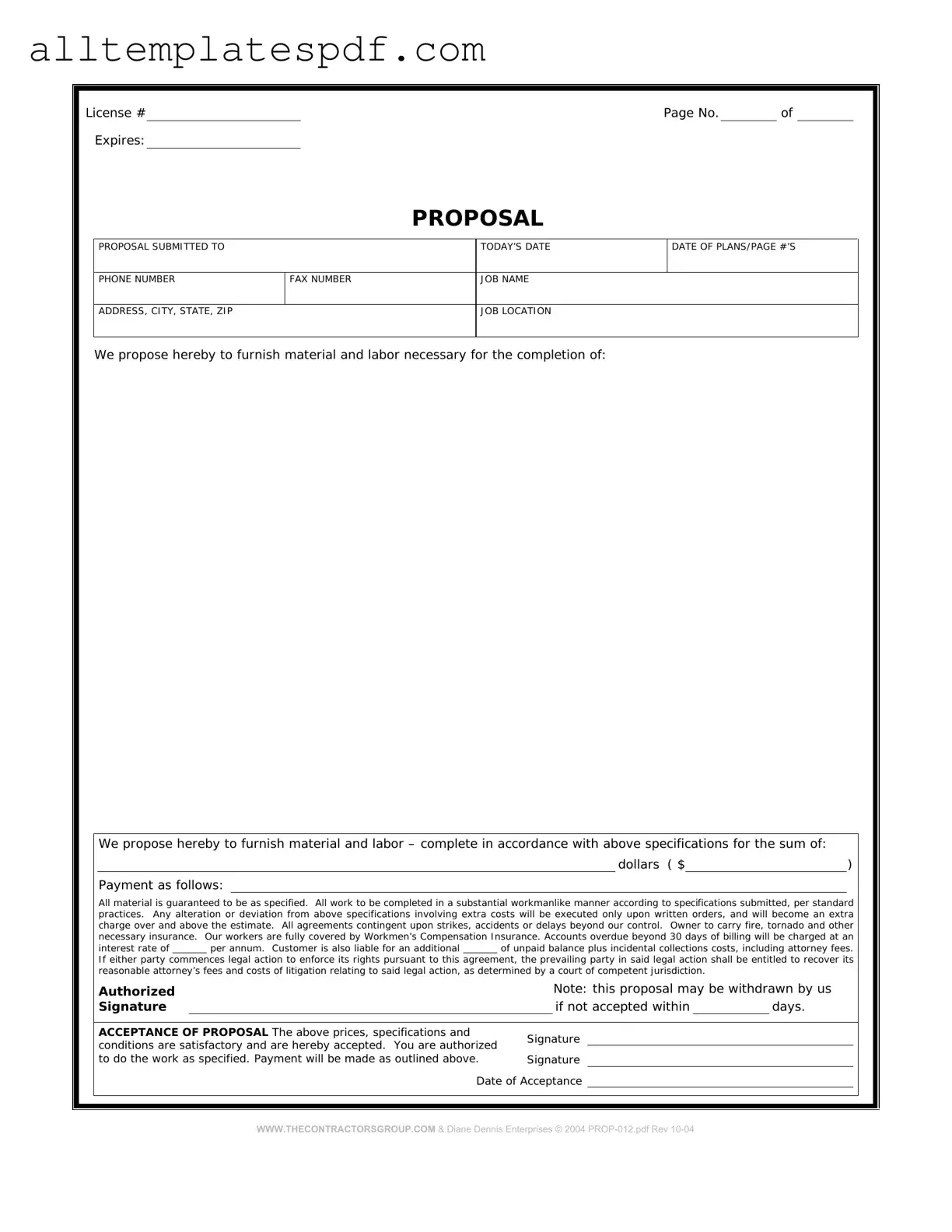Filling out a construction proposal form can seem straightforward, but many people make common mistakes that can lead to misunderstandings and delays. One frequent error is failing to provide complete contact information. Without accurate details, communication can break down, causing project timelines to stretch unnecessarily.
Another mistake is neglecting to specify the project scope. This includes not detailing the work to be performed, materials to be used, and any specific timelines. A vague proposal can lead to differing expectations between the contractor and the client.
Inaccurate cost estimates are also a common pitfall. Underestimating expenses can result in financial strain later on. It's essential to account for all costs, including labor, materials, and any potential unforeseen expenses.
Many individuals overlook the importance of including a payment schedule. Clearly outlining when payments are due helps both parties manage their finances and expectations. Without this, disputes may arise over payment timing.
Another mistake is failing to address permits and inspections. Not including these requirements can lead to legal issues and project delays. Ensuring that all necessary permits are accounted for is crucial to keeping the project on track.
Some people forget to include a timeline for project completion. A well-defined schedule helps keep everyone accountable and provides a clear target for project milestones.
Additionally, not addressing change orders can lead to confusion. Change orders are essential for documenting any modifications to the original proposal. Without them, disputes may arise over what was agreed upon.
Many proposals lack a clear termination clause. This clause outlines the conditions under which either party can terminate the agreement. Without it, both parties may face challenges if the need to end the contract arises.
Some individuals fail to proofread their proposals. Simple typos or unclear language can lead to misinterpretations. Taking the time to review the document can prevent unnecessary issues.
Lastly, not seeking legal advice can be a significant oversight. Consulting with a legal professional ensures that the proposal complies with local laws and regulations, protecting both parties involved.
